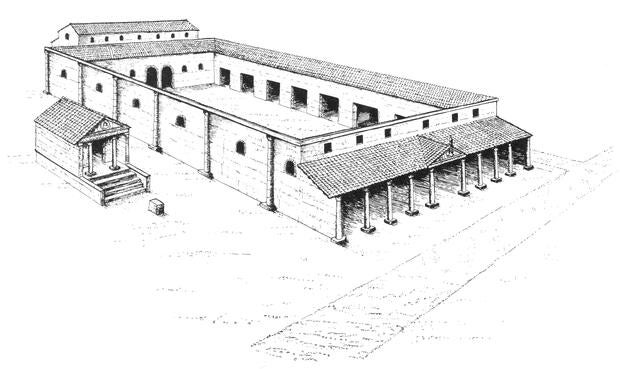Archaeologists discovered the remains of London’s oldest-known ancient Roman Basilica, located on the site of an upcoming 32-story skyscraper in the heartland of Londinium. Excavations were conducted in the basement of the building that was to be demolished for the construction of the new tower on 85 Gracechurch Street. The foundations and walls found there are over two millennia-old and consisting mainly of brick, flint and ragstone.
Sophie Jackson of Museum of London Archaeology described it as “one of most significant discoveries in recent years” in the City of London, Britain’s oldest district, where modern high-rises are built on top of Victorian, Medieval and even older structures.
Scientists say that they have discovered the foundations for a two-story structure almost as large as an Olympic swimming pools. The building was built between 78-84 A.D. about 30 years after Roman troops conquered the British Isles and 20 years after Boudicca’s forces ravaged the fledgling settlement.
The basilica was a part of the forum – the heart of Roman London (or Londinium), where people gathered to socialize, shop, hear political edicts, and seek justice. The newly-discovered remains are thought to be part of the Tribunal, an elevated area of the forum in which politicians and officials decided about the city’s government.
Andrew Henderson-Schwartz is the head of Museum of London Archaeology’s public impact. “We are talking about London in its early stages,” he said. But it’s an indication of the investment made in London, even at its infancy.
Hertshten Properties has been granted permission to build a new office building on the site. The developer has agreed that the remains will be incorporated into the plans for the tower and displayed in a visitor centre.
Henderson-Schwartz stated that the “absolutely huge” foundations found in the test pits dug up by archaeologists suggest an “extraordinary level” of preservation for the building ruins.
Further excavation could provide answers to intriguing questions such as why the forum was used only for 20 years and then replaced with a larger one. This newer forum remained in place until the fall of Roman rule over Britain three centuries after. Writing tablets, styluses and even old trash could provide a glimpse into Roman Londoners’ daily lives.
In Britain, property developers are required to hire archaeologists to consult on construction projects. This has led to discoveries ranging from Anglo-Saxon jewelry and remains to medieval skates and skeletons plague victims.
The new discovery is a part of the Roman London traces that are visible around the city. These include a section from the ancient wall which once surrounded Londinium and a piece of an amphitheater. A temple dedicated to Mithras was also discovered, incongruously, under the modern HQ of the information company Bloomberg.
Henderson-Schwartz stated, “There are many little windows that look into Roman London. They can be found all around the city.” This is the place that ties them all together. It is in London that all decisions were taken. This is the heart and soul of Rome.
Archaeologists in England have discovered coins that are worth over $125,000 and date back to Emperor Nero’s reign.







